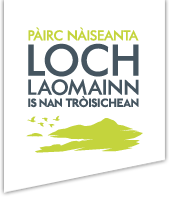
National Park Authority pledges net zero emissions by 2030
Loch Lomond & The Trossachs National Park Authority has committed to becoming a net zero organisation by 2030.
The National Park Authority has developed an ambitious Mission Zero route map, which will see air source heat pumps, solar panels and a fully electric fleet of vehicles rolled out to reduce carbon emissions. The Mission Zero ethos will be embedded across the whole organisation, making emissions reduction the top priority.
The National Park covers 720 square miles across four local authority areas and the Park Authority manages visitor facilities, offices and a fleet of vehicles to patrol the vast area.
Greenhouse gas emissions have been reduced by 38 per cent since 2014 but the Mission Zero route map will see efforts stepped up. At least £200k will be invested in emissions reduction in 2021/22 alone, including additional electric vehicles and an electric hybrid patrol boat for Loch Lomond.
Gordon Watson, Chief Executive of Loch Lomond & The Trossachs National Park Authority, said: “The Scottish Government declared a global climate emergency in 2019 and set out its ambition to become a ‘Net Zero Nation’ by 2045.
“As a public body, and as a National Park Authority for whom protection of the environment is a core aim, we are confident that we can play our part by reaching net zero 15 years ahead of that target.
“Whilst we have seen some real progress in reducing our emissions, we know that now is the time to redouble our efforts and strengthen our commitment to Scotland’s future.
“We have a clear route map outlining how we will achieve net zero over the next decade – involving a real step change in how we operate so that emissions reduction is at the heart of our decision making.
“With this goal in sight, we will dramatically reduce the emissions associated with the work we undertake, the services we deliver and those arising from across the land and buildings we manage.”
In addition to infrastructure changes, all staff, volunteers and the National Park Authority Board will be encouraged to consider how their behaviour can support net zero. Progress will be continuously monitored and the National Park Authority will seek to bring the net zero date closer than 2030 if practical to do so.
Net zero will be achieved primarily through reducing emissions and where offsetting is required, nature-based solutions within the National Park itself will be considered, such as peatland restoration and woodland expansion. Both offer natural ways of absorbing and storing carbon from the atmosphere but with much of Scotland’s peatland degraded, restoration is crucial to prevent carbon escaping.
The National Park Authority’s commitment to net zero is an important step towards wider ambitions for the whole National Park to become net zero. In recent years, the area has seen more frequent flooding and landslips, seriously damaging people’s homes, communities and businesses, and where ecosystems have been threatened by changes to climate.
Dr Heather Reid, science education consultant and former weather forecaster with the Met Office and BBC Scotland, sits on the Park Authority’s Board and is sponsoring the Mission Zero work.
She explained: “The growing impacts of the climate emergency have been all too real for those living, working and visiting the National Park and tackling climate change has been a priority for us for a number of years.
“Alongside our investment in green infrastructure and technology, we will continue to support everyone here at the National Park Authority to champion emissions reduction in the actions we all take, ensuring that Mission Zero is everyone’s responsibility, and opportunity, to achieve.
“Mission Zero will influence how we work as an organisation and will also build motivation and momentum to drive positive and coordinated climate action across the National Park, making it an important step towards the National Park itself becoming a net zero place.”
More information on Mission Zero

